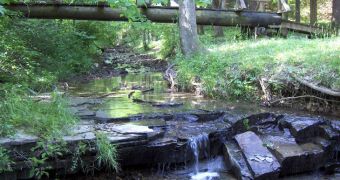Scientists have determined in a new study that wildlife reserves which cover a very large area are not necessary the most suitable places where biodiversity can thrive. Significantly better results were obtained with smaller reserves, but that were placed exactly where it was needed.
Generally, people tend to declare reservations areas that are outside their paths, and which are not regularly visited. But, while this may work at times, in other instances the very biodiversity these areas is supposed to protect cannot survive in designated areas.
Experts have been drawing attention on the fact that natural reserves protect humans more than they do animals for many years, but thus far their complaints have fallen on deaf ears. Authorities seem to be unwilling to take on this thorny issue, and so they prefer to let things be.
Poor placement is therefore emerging as one of the challenges associated with preserving biodiversity, in the aftermath of the international CBD meeting that took place in late October.
“These protected areas might not be representing a lot of rare species, but they contribute in other ways,” explains researcher Lisette Cantu-Salazar, who is based at the University of Sheffield in England.
The expert is also the lead author of a new study detailing the findings, that was recently published in the latest issue of th esteemed journal BioScience, Our Amazing Planet reports.
The new investigation looked at 63 large conservation areas on different continents, which covered an areas of 25,000 square kilometers, or 9,700 miles. Together, these conservation areas make up as little 0.05 percent of all the 120,000-plus reserves on Earth.
One of the most interesting things the team noticed is that animals need to be able to migrate within their confines, in the sense that they must have more elevated areas to accommodate them. As global warming progresses, temperatures shift at the animals' usual grounds, and they need to go up to remain within the same temperature range.
Naturally, if the land is flat, then they have nowhere to go, and all the size in the world makes little difference for their survival.
“These habitats are providing important services for people, but they aren't all ideally situated for the best return on investment in terms of conserving biodiversity,” says the director of Global Priorities at Conservation International, Will Turner. He was not a part of the study.
The investigation also proposes that more reserves be established in the world's oceans, which contains vast amounts of biodiversity that needs protecting.

 14 DAY TRIAL //
14 DAY TRIAL //